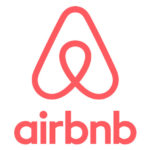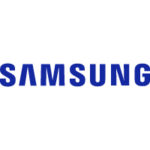Search results for: Segmentation, Targeting

Amazon segmentation, targeting and positioning involves a set of activities aimed at determining specific groups of people as customers and developing products and services attractive to this group. Segmentation involves dividing population into groups according to certain characteristics, whereas targeting implies choosing specific groups identified as a result of segmentation to sell products to. Positioning refers to the selection of the marketing mix the most suitable for the target customer segment. Amazon mainly uses the following two types of positioning: Multi-segment positioning. Amazon offers a wide range of products and services, successfully exploiting more than one segment at the same time. Specifically, the online retail giant sells more than 75 million products, appealing to the needs and wants of a wide range of customer segments.[1] Adaptive positioning. The online retail giant closely monitors changes in external marketplace and addresses increasing customer expectations by periodically repositioning of products and services according to changes in the segment. Anticipatory positioning. This refers to positioning to a market segment that has low turnover with the anticipation that the turnover will increase in the future. Amazon Web Services (AWS) is a stark example for anticipatory positioning. Company’s founder and former CEO Jeff Bezos notes that “no one asked for AWS. No one. Turns out the world was in fact ready and hungry for an offering like AWS but didn’t know it”[2] Additional examples of anticipatory positioning applications by the e-commerce giant include Amazon Sage Maker, Amazon Comprehend and Amazon Rekognition. Stop-gap positioning This strategy involves investing in currently unprofitable brand due to profitability expectations on long-term perspective. The e-commerce giant applied stop-gap positioning strategy in relation to a number its brands such as Core 10, Happy Belly and Vedaka. The following table illustrates Amazon segmentation, targeting and positioning: Type of segmentation Segmentation criteria Amazon target…

Square segmentation, targeting and positioning refers to a series of consecutive marketing efforts. It comprises the following stages: 1. Segmenting the market. Generally, market segmentation involves dividing population into certain characteristics. For Square, segmentation also involves private entities taking into account B2B, as well as, B2C nature of its business. The most popular types of segmentation are geographic, demographic, behavioural and psychographic. 2. Targeting the selected segment(s). Choosing specific groups among those formed as a result of segmentation to sell products and/or services. In B2B front Square selected as target customer segment small businesses facing difficulties accepting credit cards. In B2C business, the target customer segment for Square is broad. The financial unicorn decided to target the individuals in developed countries who engage in financial transactions with other individuals and this segment of population is large. 3. Positioning the offering. Choosing and applying the elements of the marketing mix that appeal best to the needs and wants of the selected target customer segment. Square developed a card reader and positioned this product as an effective solution for small businesses that were facing difficulties in accepting credit cards. The payments company is making an important shift from mono-segment towards multi-segment type of positioning. Specifically, the financial services platform started with selling card readers to small business segment only. Nowadays, Square’s expanding range of financial products and services are attracting increasing numbers of medium business segment as well. For B2C customer segment the financial services platform positioned its products and services as simplified versions of products and services already available on the market. For example, Cash App offers individuals hassle-free possibilities of investing in stock and bitcoin without any commission. Square Inc. Report contains the above analysis of Square segmentation, targeting and positioning and Square marketing strategy in general. The report illustrates…

Uber segmentation, targeting and positioning can be specified as the essence of Uber marketing strategy. Segmentation involves dividing population into groups according to shared characteristics, whereas targeting implies choosing specific groups identified as a result of segmentation to sell products. Positioning refers to the selection of the marketing mix the most suitable for the target customer segment. Uber uses the following positioning methods: 1. Multi-segment positioning. Uber uses multi-segment type of positioning and accordingly, targets several customer segments with different levels of service. The ride-hailing giant offers economy services such as Uber X, Uber XI and Uber Pool for cost-conscious customers. At the same time, Uber PREMIUM consisting of fleet of stylish vehicles is available for customers who don’t mind to pay more. 2. Stop-gap positioning. Stop-gap positioning involves investing in currently unprofitable brands with profitability expectations in long term-perspective. Uber used this positioning method for its Advanced Technologies Group (ATG) business unit. Specifically, the ride-hailing giant invested hundreds of millions of USD in the development of autonomous self-driving cars. However, the project did not generate expected results and ATG unit was sold to Aurora Innovation Inc. in January 2021. The following table illustrates Uber segmentation, targeting and positioning: Type of segmentation Segmentation criteria Uber target customer segment Uber X, Uber XI, Uber pool, Uber-MOTO, Uber AUTO Uber Premium, Uber Go, UberEATS, Uber BOAT, UberRUSH Uber Access Geog-raphic Region North & South America, Asia, & New Zealand Australia, Europe, Africa Uber AUTO – Bangalore and Pune Only North & South America, Asia, & New Zealand Australia, Europe, Africa North & South America, Asia, & New Zealand Australia, Europe, Africa Density Urban/rural Urban/rural Urban/rural Demog-raphic Age 18+ 25-65 45-65 Gender Males & Females Males & Females Males & Females …

Tesla segmentation, targeting and positioning is a chain of activities that involves identification of a specific population segment(s) and developing products to cater for the needs and wants of consumers belonging to the segment(s). Segmentation involves dividing population into groups according to certain characteristics such as age, social status, psychological characteristics etc. Targeting implies choosing specific groups (segments) identified as a result of segmentation to sell products to. Positioning is the selection and application of the marketing mix the most suitable for the target customer segment. Tesla uses mono-segment positioning. Accordingly, the alternative fuel vehicles manufacturer targets individuals concerned with negative environmental implications of oil and gas consumption. Tesla products are considered to be expensive for average consumers and thus, the target customer segment for the company is wealthy individuals and households. At the same time, Tesla may switch from mono-segment to multi segment type of positioning in the foreseeable future. According to Tesla business strategy announced by Elon Musk in a blog post in 2006, the company builds sports car, uses that money to build an affordable car and uses that money to build an even more affordable car. [1] Tesla also uses anticipatory type of positioning. Specifically, the electric automaker positions its products and services for a market segment that has low turnover with the anticipation that the turnover will increase in the future. The electric automaker’s energy storage products such as Powerwall 2 and Powerpack 2 can be mentioned as examples for anticipatory positioning. The following table illustrates Tesla segmentation, targeting and positioning: Type of segmen-tation Segmen-tation criteria Tesla target customer segment Vehicles: Model S, Model X, Model 3, Future Consumer and Commercial Evs Energy storage: Powerwall 2, Powerpack 2 Solar energy systems: solar panels, inverters, racking, electrical hardware, monitoring device Geog-raphic Region North America,…

W.W. Grainger segmentation, targeting and positioning refers to ways in which the global industrial supply company chooses specific companies among large base of potential customers and develops its product and service offering to appeal to the needs of a few chosen customers. Segmentation involves dividing population into groups according to certain characteristics. Grainger uses a set of segmentation criteria such as region, size of the company, turnover and potential annual MRO spending. Moreover, complexity of customer needs is an important segmentation criteria extensively employed by the industrial supply company. Targeting is the next stage after segmentation and it is associated with selecting specific groups to sell products to. Positioning refers to the selection of the marketing mix that appeals to the needs and wants of the target customer segment to the maximum extent. Grainger uses multi-segment type of positioning and accordingly, the B2B distributor exploits more than one segment at the same time. Specifically, Grainger positions its Zoro and MonotaRO websites to appeal to the needs of small and medium-sized customer segment with simple needs for MRO products. Different customer segment with more complex needs on the other hand, are targeted via High-Touch Solutions value proposition, which involves sales and service representatives, KeepStock inventory management system and collection of orders from branches. There are important differences between B2C (business-to-customer) and B2B (business-to-business) segmentation. These differences include the following: 1. More complex and rational decision making. Decision making process by Grainger target customer segment is complex and rational. It is opposite to B2C segment, where appeal can be made to customers’ needs on emotional level to influence the purchasing behaviour. This fact has direct implications on Grainger positioning in a way that the global industrial supply company has to base its value proposition on measurable and tangible advantages. 2. Complexity of…

Airbnb segmentation, targeting and positioning consists of a set of consequent activities that divide customers into different groups and identify specific groups to be targeted. The accommodation and experience marketplace positions its services in a way that best appeals to the needs and wants of members of this group. Airbnb uses the following types of positioning: 1. Multi-segment positioning. The global lodging company uses multi-segment type of positioning targeting more than one segment with different service packages. For example, the company lists cost-effective apartments for rent for cost-conscious customer segment, whereas Airbnb Plus package targets customers who value advanced quality and design and are willing to pay more. Recently, the platform launched its Airbnb Luxe line of premium apartments that has been positioned as ‘extraordinary homes with five-star everything’ targeting premium customer segment. 2. Anticipatory positioning. Airbnb uses anticipatory positioning, launching services for a market segment that has low turnover with the anticipation that the turnover will increase in the future. Adventures services such as ‘Around the World in 80 Days’ and experiences of “Becoming a Beekeeper” can me mentioned as examples of Airbnb services with anticipatory positioning. The following table illustrates Airbnb segmentation, targeting and positioning: Type of segmentation Segmentation criteria Airbnb target customer segment Accommodation Experiences & Adventures Geographic Region More than 191 countries and regions and about 100000 cities More than 30000 experiences worldwide Density Urban/rural Urban Demographic Age 18-45 18-60 Gender 54% Females & 46% Males[1] Males & Females Life-cycle stage Bachelor Stage Newly Married Couples Full Nest I Full Nest II Full Nest III Empty Nest I Empty Nest II Bachelor Stage Newly Married Couples Full Nest I Full Nest II Empty Nest I Occupation Students, employees, professionals, Students, employees, professionals, senior manager, executives Behavioral Degree of loyalty ‘Hard core…

Microsoft segmentation, targeting and positioning can be explained as a set of activities that constitute the core of marketing efforts for the multinational technology company. Segmentation involves dividing population into groups on the basis of certain characteristics. Businesses focus on certain customer segments and position their products and services to satisfy needs and wants of these particular segments. Microsoft uses the following types of positioning: a) Multi-segment positioning. The company targets more than one customer segments at the same time with different product and service packages. For example, Dynamics 365, a software for building and supporting customer relationships starts with USD 115/month Customer Engagement Plan for cost-conscious customer segment. Unified Operations Plan starting from USD 190/month, on the other hand is developed for a different customer segment that do not mind to pay extra for additional set of functions and features within Dynamics 365. b) Standby positioning. Standby positioning technique involves the development of products and services that can await changes in the market to find demand in the future. When Microsoft announced its ‘cloud-first, mobile-first’ business strategy in 2014, cloud data storage was a new segment. CEO Satya Nadella saw a potential in cloud business, focused on the development of cloud services using standby positioning technique. The demand for cloud consistently increased and in Q2, 2018 alone, Microsoft commercial cloud revenues reached USD 6.9 billion, a growth of 53% compared to the previous period.[1] The following table illustrates Microsoft segmentation, targeting and positioning: Type of segmentation Segmentation criteria Microsoft target customer segment Geographic Region Global marketplace Density Urban and rural Demographic Age 16 and older Gender Males & Females Life-cycle stage Bachelor Stage young, single people not living at home Newly Married Couples young, no children Full Nest I youngest child under six Full Nest…

Xiaomi segmentation, targeting and positioning is needed to indentify the target customer segment for the company and to develop products and services that are attractive to this segment. Segmentation involves dividing population into groups according to certain characteristics, whereas targeting implies choosing specific groups identified as a result of segmentation to sell products. Positioning refers to the selection of the marketing mix the most suitable for the target customer segment. Xiaomi uses mono-segment and imitative types of positioning. The internet technology company uses mono-segment positioning, appealing to the needs of a single customer segment. Specifically, Xiaomi targets a customer segment that want to use smartphones and other technology products, but have limited budget to make such a purchase. Xiaomi also uses imitative type of positioning by closely imitating the products of market leaders such as Apple and Samsung. The electronics and software company has even earned the nickname “Apple of the East” due to its close imitation of Apple products and Apple product presentation. The following table illustrates Xiaomi segmentation, targeting and positioning: Type of segmentation Segmentation criteria Xiaomi target customer segment Geographic Region 70 countries and regions globally Density Urban and rural Demographic Age 18 – 65 Gender Males & Females Life-cycle stage Bachelor Stage young, single people not living at home Newly Married Couples young, no children Full Nest I youngest child under six Full Nest II youngest child six or over Full Nest III older married couples with dependent children Empty Nest I older married couples, no children living with them Empty Nest II older married couples, retired, no children living at home Solitary Survivor I in labour force Solitary Survivor II retired Occupation Students, employees, professionals Behavioural Degree of loyalty ‘Hard core loyals’ ‘Soft core loyals’ ‘Switchers’ Benefits sought Cost attractiveness Personality Easygoing, determined and ambitious personality types User status non-users, potential…

Samsung segmentation, targeting and positioning involves a set of activities performed in a sequence. These activities constitute the essence of Samsung marketing strategy. Segmentation involves dividing population into different groups on the basis of their common characteristics. Targeting is associated with selecting specific group(s) as consumers of products and services. Lastly, positioning refers to the selection of the marketing mix the most suitable for the target customer segment. Samsung uses the following types of positioning: Multi-segment positioning. Samsung targets more than one segments at the same time through offering several packages of products and services. For example, there are several variations of Samsung SMART Signage professional displays with different sizes, screen resolutions and functionalities and ultimately with different price tags. Thus, Samsung appeals to the needs and wants of consumers with varying financial capabilities. Imitative positioning. Samsung is known to imitative its main competitor Apple in product in design, functionalities, as well, as marketing strategy. Anticipatory positioning. Certain Samsung products such as mobile image sensors currently have low turnover. However, these product have been developed with the anticipation that the turnover will increase in the future. The following table illustrates Samsung segmentation, targeting and positioning: Type of segmentation Segmen-tation criteria Samsung target customer segment Samsung IT & Mobile Communications Samsung Consumer Electronics Samsung Device Solutions Geog-raphic Region 80 countries worldwide 80 countries worldwide 80 countries worldwide Density Urban/rural Urban/rural Urban/rural Demo-graphic Age 18-65 25-65 25-60 Gender Males & Females Males & Females Males & Females Life-cycle stage Bachelor Stage Newly Married Couples Full Nest I Full Nest II Full Nest III Empty Nest I Empty Nest II Solitary Survivor I Solitary Survivor II Bachelor Stage Newly Married Couples Full Nest I Full Nest II Full Nest III Empty Nest I Empty Nest II Bachelor Stage Newly Married…

Alphabet (Google) segmentation, targeting and positioning efforts can be explained as the essence of company’s marketing efforts. Segmentation divides population into groups on the basis of specific characteristics. Targeting refers to choosing certain groups identified as a result of segmentation to sell products and services. Lastly, positioning refers to the selection of the marketing mix the most suitable for the target customer segment. Google uses the following types of positioning: Multi-segment positioning. The company offers a wide range of products and services such as Search, Android, Maps, Chrome, YouTube, Google Play, and Gmail that target multiple customer segments Standby positioning. Certain products within Alphabet portfolio such as robotics, Waymo self-driving cars, Lunar XPRIZE space exploration program, 3D mapping and others may not have a clear target customer segment at this stage. Nevertheless, these products and projects are awaiting changes in the market for the demand to emerge. Imitative positioning. Google has used imitative positioning in a few instances. The launch of Chrome browser to imitate then-market leader Internet Explorer and the launch of G+ social networking site to imitate Facebook can be mentioned to illustrate this point. The following table illustrates Google segmentation, targeting and positioning: Type of segmentation Segmentation criteria Google target customer segment Geographic Region Global scale Density Urban and rural Demographic Age Anyone older than 12 years old Gender Males & Females Life-cycle stage Bachelor Stage young, single people not living at home Newly Married Couples young, no children Full Nest I youngest child under six Full Nest II youngest child six or over Full Nest III older married couples with dependent children Empty Nest I older married couples, no children living with them Empty Nest II older married couples, retired, no children living at home Solitary Survivor I in labour force Solitary Survivor II retired…
